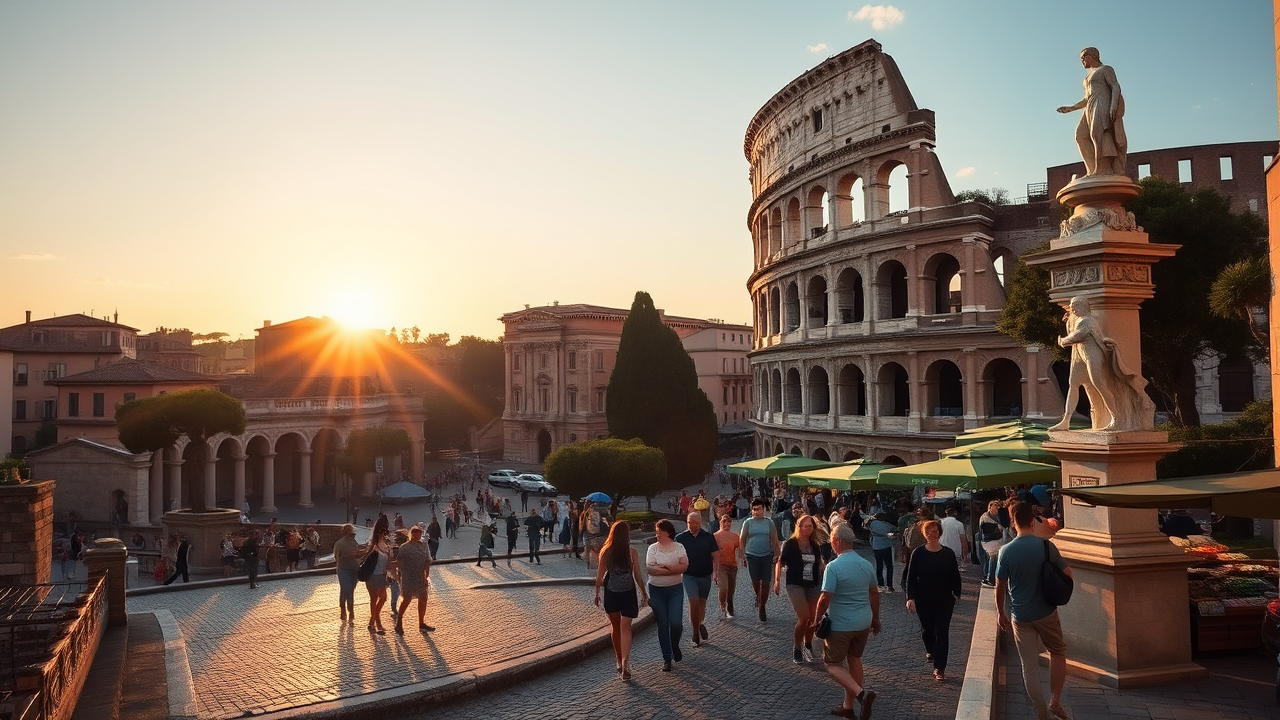Exploring the Rich Historical Landmarks of Rome
Rome, the eternal city, is a place where history comes alive at every corner. From ancient ruins to bustling streets filled with Renaissance art and Baroque architecture, Rome offers an immersive experience for history buffs, art lovers, and curious travelers alike. If you’re planning a trip to this legendary city, this guide will walk you through some of its most iconic landmarks, sharing their historical significance and tips for making the most of your visit.
The Allure of Rome: A Travel Guide
Before diving into the landmarks, it’s good to understand what makes Rome such a captivating destination. Known as the birthplace of Western civilization, Rome’s history stretches back over 2,500 years. Walking through its streets feels like paging through a living history book, where each monument tells a story from the Roman Empire, the Renaissance, and beyond.
A practical Rome travel guide includes tips on the best times to visit, navigating the city, and how to appreciate its vibrant street life. Be prepared for plenty of walking, and don comfortable shoes, as many of the treasures are best explored on foot.
The Colosseum: An Icon of Roman Engineering
The Colosseum is undoubtedly the most recognizable symbol of Rome. Built between AD 70 and 80 during Emperor Vespasian’s reign, this massive amphitheater once hosted gladiatorial contests, animal hunts, and public spectacles that attracted thousands of spectators.
Walking through the ruins of the Colosseum, you can almost hear the roar of ancient crowds. Its impressive architecture includes multiple levels, intricate underground chambers, and a complex system of corridors. A visit here offers a glimpse into the grandeur of Roman engineering and entertainment.
Tips for visitors: Buy tickets in advance to skip long lines, and consider taking a guided tour to learn about the history and engineering marvels of this ancient arena. Try to visit early in the morning or late in the afternoon to avoid the crowds.
The Roman Forum: Heart of Ancient Rome
Adjacent to the Colosseum lies the Roman Forum, the political, commercial, and religious center of ancient Rome. Once the site of triumphal processions, public speeches, and sacred rituals, today it’s a sprawling archaeological site with ruins of temples, basilicas, and monuments.
Moving through the Forum feels like stepping back in time. Key sights include the Temple of Saturn, the Arch of Titus, and the remains of the Senate House. Each monument echoes stories of Roman political power, religious life, and societal structure.
Tips: Wear sturdy shoes, as the uneven terrain can be challenging. Consider a guided tour to understand the complex history behind each ruin, or rent an audio guide for a self-paced exploration.
Palatine Hill and Capitoline Museums
Overlooking the Roman Forum is Palatine Hill, where Rome’s legendary founding by Romulus and Remus is rooted in myth. The hill contains ancient ruins, imperial palaces, and stunning views of the city.
For art enthusiasts, the Capitoline Museums house an incredible collection of Renaissance and Baroque art, including sculptures, paintings, and relics that showcase Rome’s cultural richness.
Discovering Rome’s Street Life and Art Scene
Rome’s charm extends beyond its monuments. Strolling through neighborhoods like Trastevere and Monti, you’ll encounter lively markets, street performers, and small cafes serving authentic Italian cuisine. The city’s vibrant street art adds a contemporary layer to its ancient backdrop.
Local markets such as Campo de’ Fiori and Testaccio Market offer fresh produce, meats, cheeses, and local delicacies. For art lovers, unexpected murals and sculptures decorate many piazzas, making Rome an open-air gallery.
Best Tips for Exploring Rome
- Plan your visits early or late in the day to avoid crowds.
- Purchase skip-the-line tickets where possible.
- Explore on foot or rent a bike or scooter for faster travel between distant sites.
- Take time to enjoy local cuisine in family-run trattorias.
- Respect the sites: avoid touching or climbing on ruins.
In Conclusion
Rome’s historical landmarks are a testament to its long and varied history—from the mighty Roman Empire to Renaissance masterpieces. Whether you’re marveling at the engineering of the Colosseum, walking through the ancient ruins of the Forum, or soaking in the lively street life, Rome offers endless opportunities for discovery.
So, pack your bags, wear comfy shoes, and get ready to immerse yourself in the marvels of one of the world’s greatest cities. Every corner of Rome has a story to tell, and by exploring its landmarks, you’ll become a part of its ongoing history. Enjoy your trip to Rome—the city that never stops inspiring.

Leave a Reply